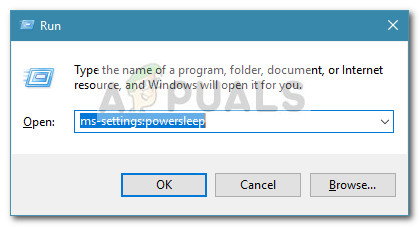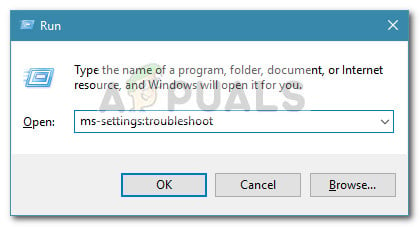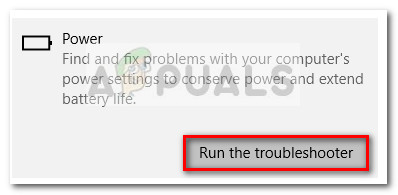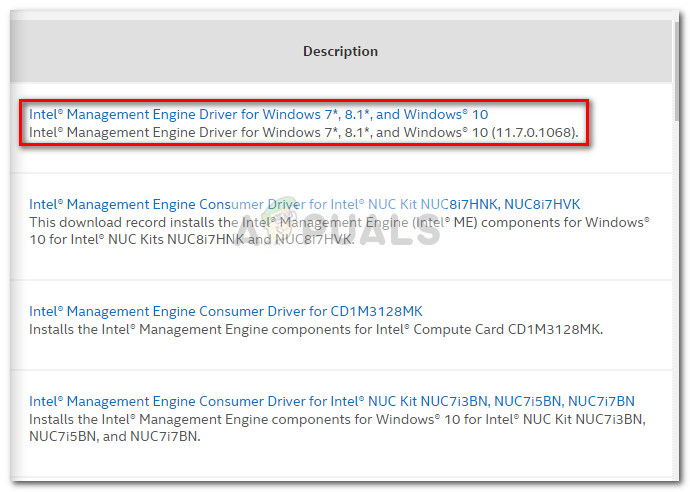If you are experiencing the same symptoms as the ones portrayed above, this article will help you troubleshoot the issue. Below you have a collection of methods that other users in a similar situation have used to resolve the issue. Please follow each potential method in order until you come across a fix that manages to fix the issue in your particular situation.
Method 1: Verifying your power settings
Before you try anything else, it’s important to make sure that your current power plan is not actually causing this behavior. It’s entirely possible your power button is configured to shut down when you short-press it. Even more, it’s standard behavior for some older laptop models to shut down instead of entering sleep or hibernation when you close the lid. Keep in mind that some power saving utilities might have recently overridden your default power settings, triggering this new behavior. Here’s a quick guide on how to make sure that your power settings are not triggering this behavior: Next, test if this method has been successful by closing the lid or pressing the power button shortly.
Method 2: Running the Windows PowerTroubleshooter
One of the first things that you could try is run the built-in Power Troubleshooter. This is a built-in Windows feature that essentially holds a collection of investigations and repair strategies to troubleshoot common problems such as the one at hand. Here’s a quick guide on running the Windows Power Troubleshooter to see if it resolves the issue: At the next startup, try putting your computer to Sleep again and see if you experience the same behavior. If your laptop or notebook is still shutting down instead of going to sleep, continue to the next method below.
Method 3: See if Power Saving mode is enabled in BIOS
Keep in mind that Sleep mode won’t function properly (or not at all) if Power Saving Mode is disabled from your BIOS settings. See if this is the cause of your issue by accessing your BIOS settings. Once you’re there, start looking for a Power Saving Mode and make sure it’s enabled. If you have a fairly old motherboard, the setting might also be called S1 and S3 power settings – if you have to choose between S1 and S3, enable S3. If you enable power saving mode from BIOS, see whether it has resolved the issue at the next boot. If Power saving mode (S3) was already enabled or this method wasn’t applicable, move down to Method 4.
Method 4: Install the latest version of Intel Management Engine Interface (IMEI)
If Windows Power Troubleshooter wasn’t able to resolve the issue automatically, let’s try a manual approach that was reportedly successful for a lot of users dealing with the same symptoms. As it turns out, the Intel Management Engine Interface (IMEI) driver is often responsible for power issues. Some users have managed to restore the normal functionality of the sleep mode by uninstalling the current driver for the Intel Management Engine interface and then manually installing the latest version from Intel’s download page. Here’s a quick guide on how to uninstall the Intel Management Engine Interface (IMEI) driver and resolve the issue where Windows 10 shuts down instead of going into Sleep mode: Important Point: If you are have installed an SSD from Samsung or any other manufacturer that also provides software along with the SSD to manage it, try to check the sleep settings and see if SSD is set to go to sleep after a certain amount of time. Many users were facing this issue due to the SSD being set to go to sleep which also puts their computer to sleep.
[SOLVED] Windows Goes to Sleep Mode Instead of Locking ScreenFix: Computer Shuts Down when USB is Plugged InFix: Computer Shuts Down when Watching YouTubeYouTube Vanced Finally Shuts Down as Google Sends Cease-and-Desist Letter Ending…





